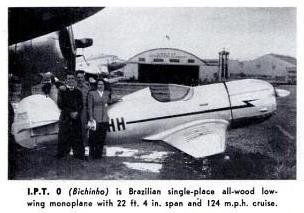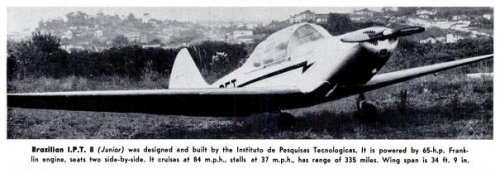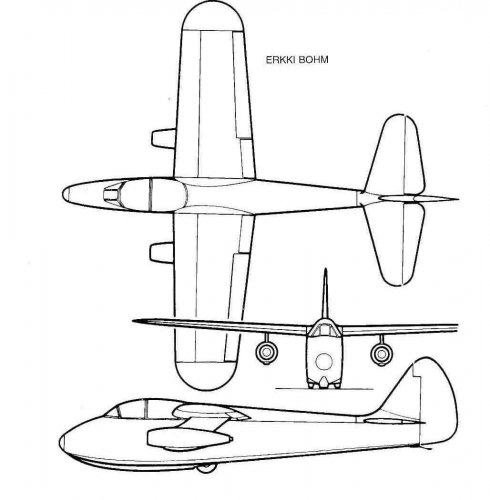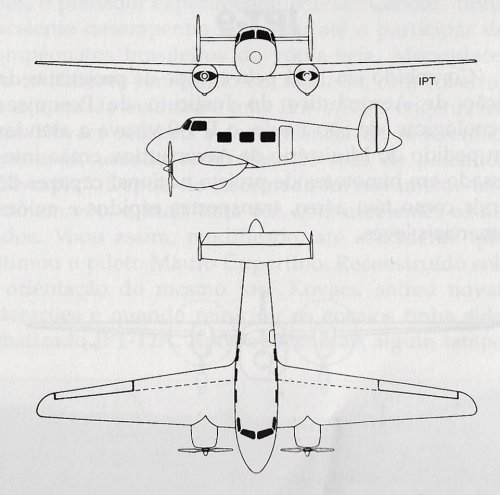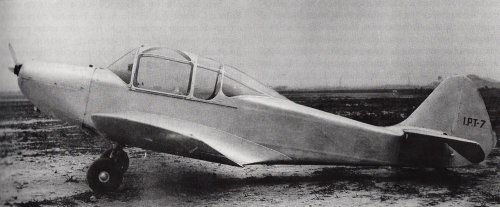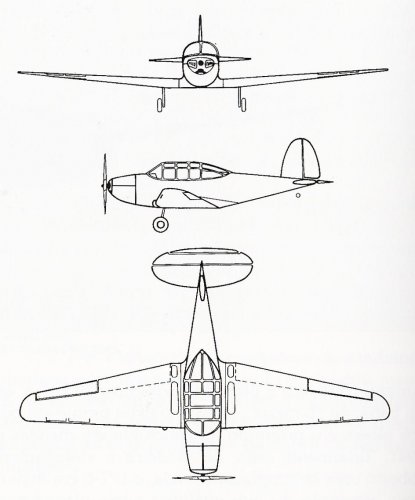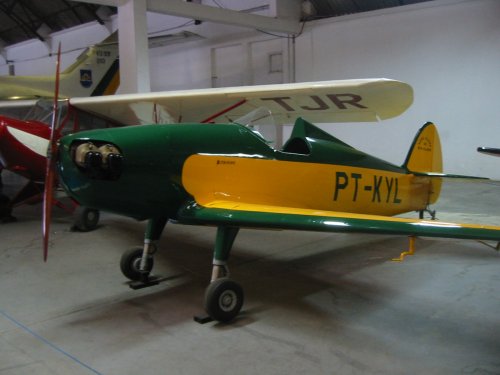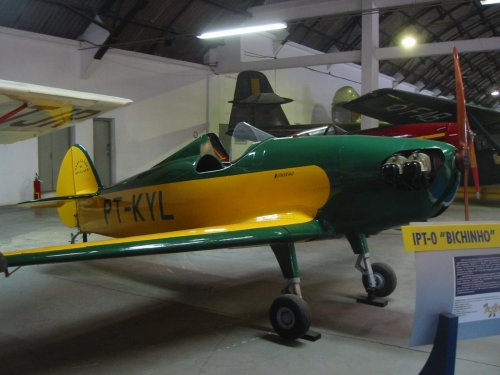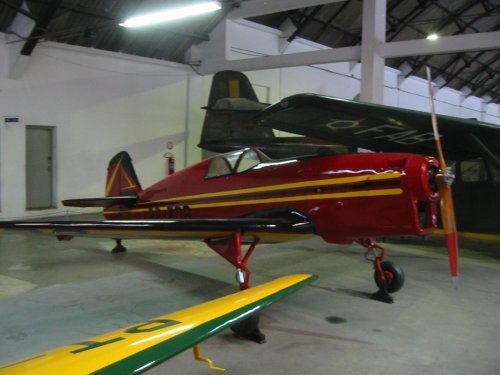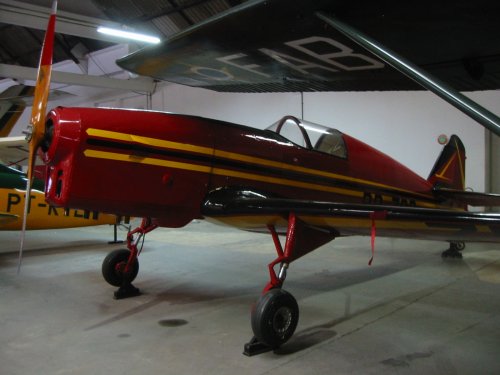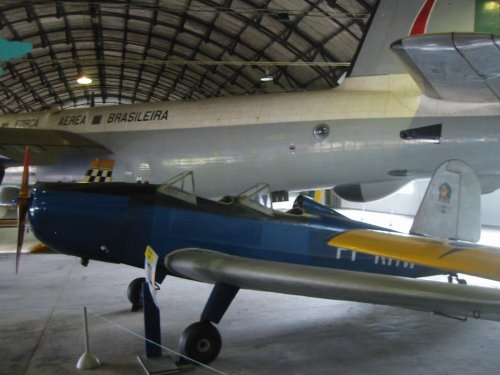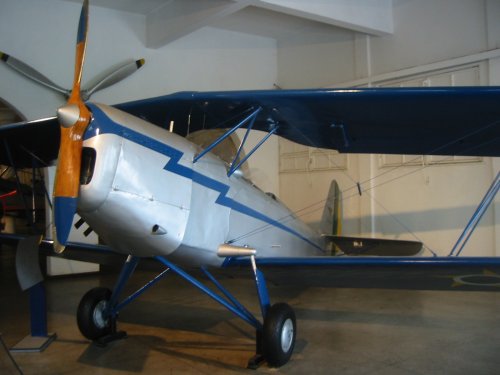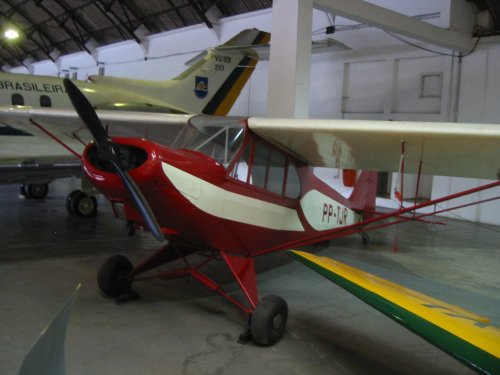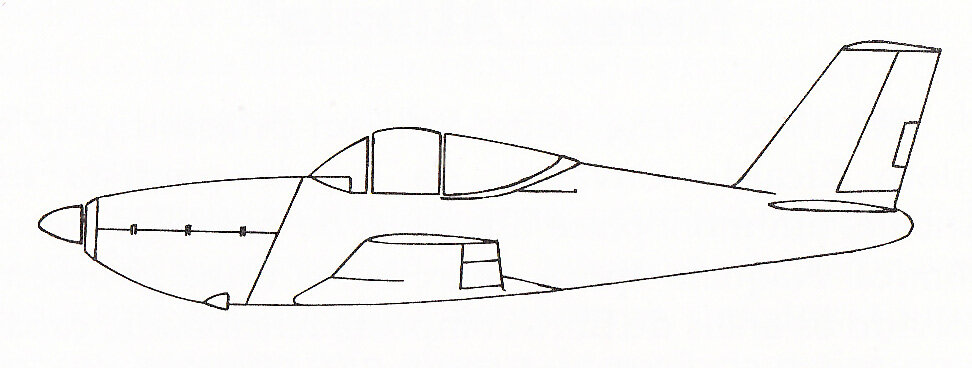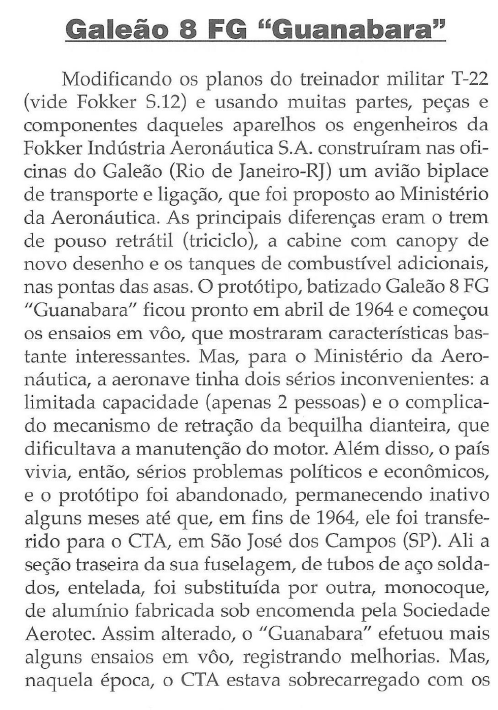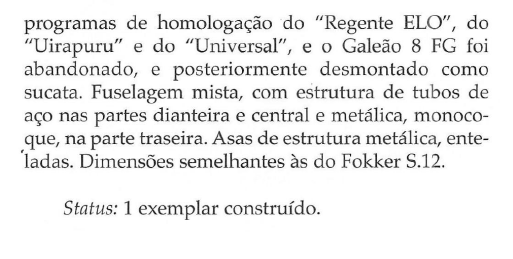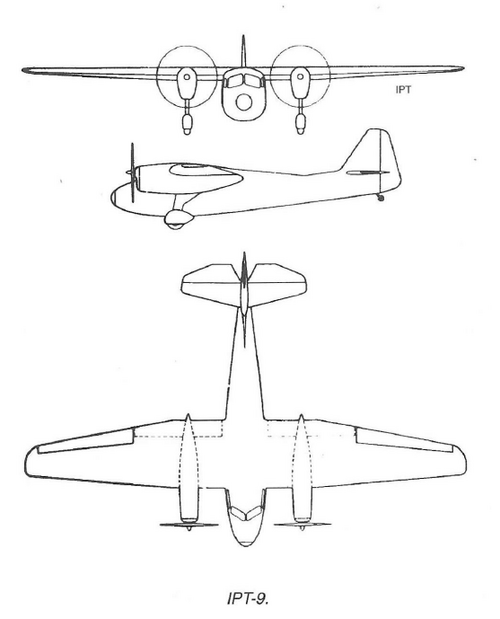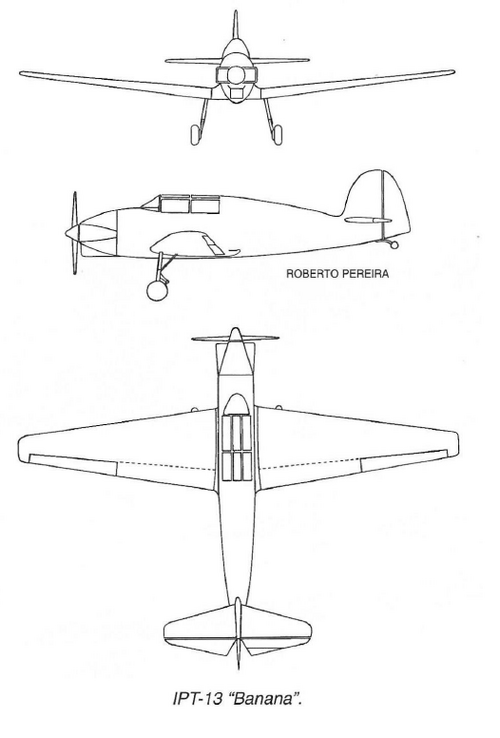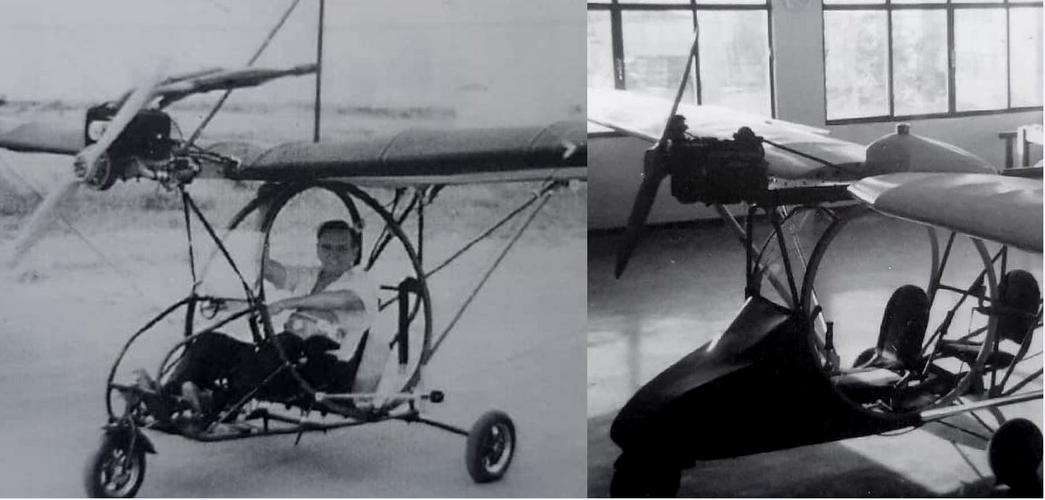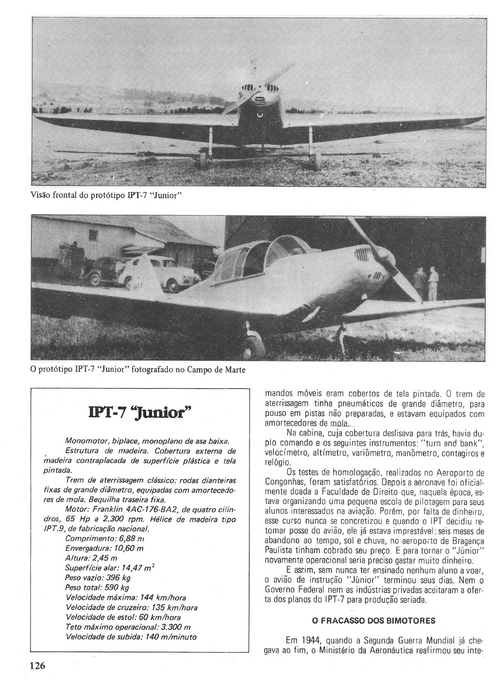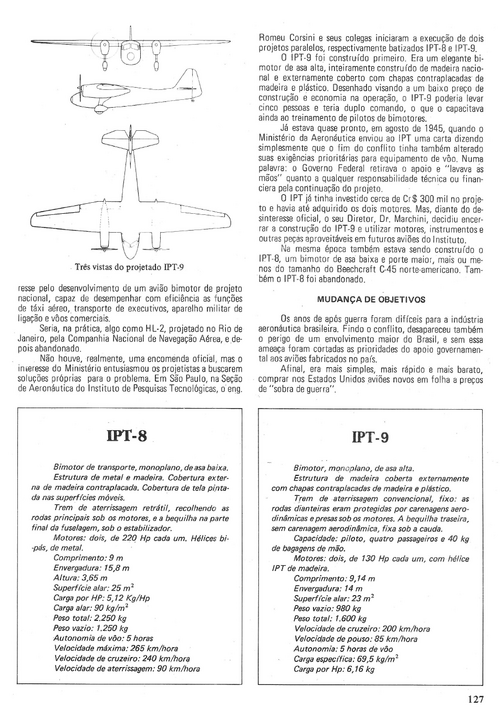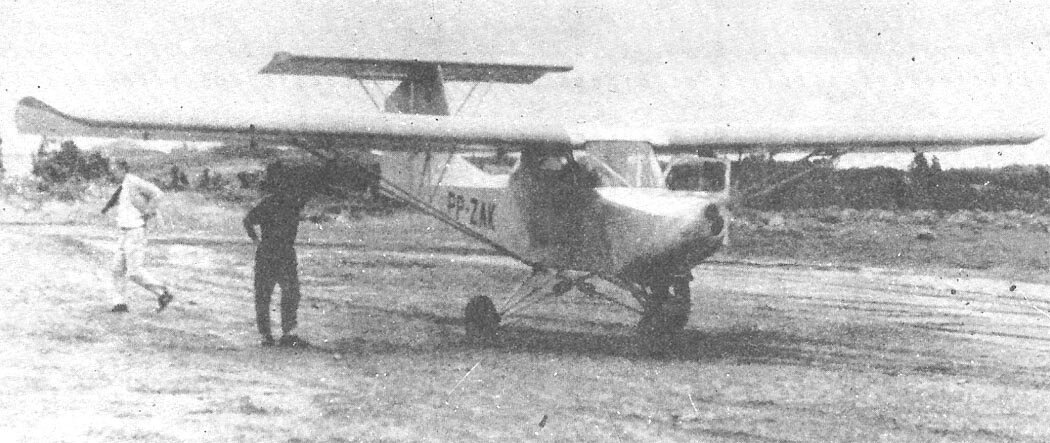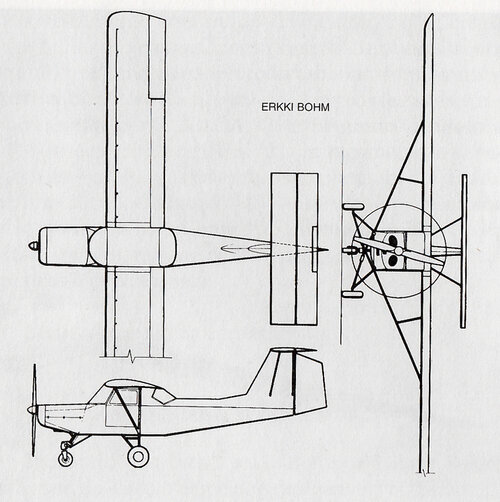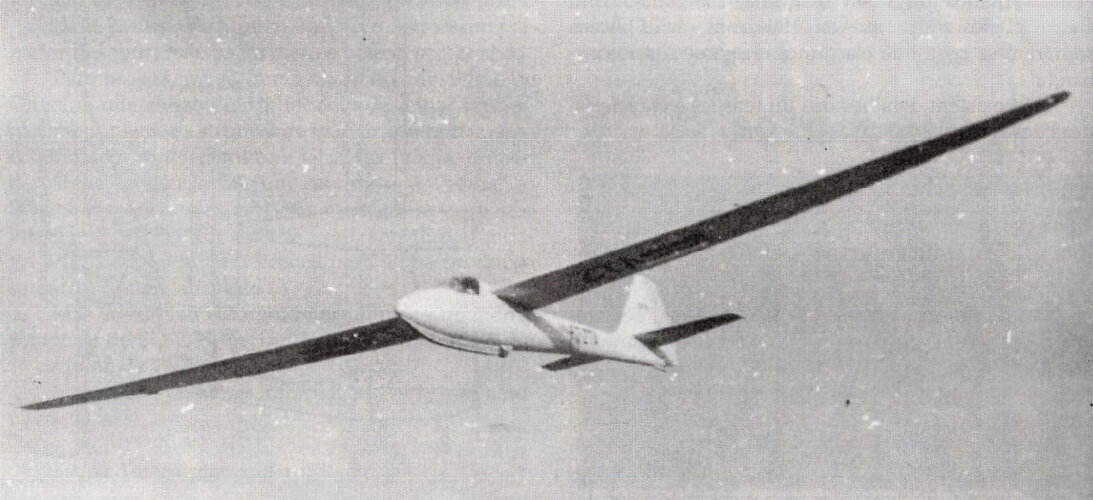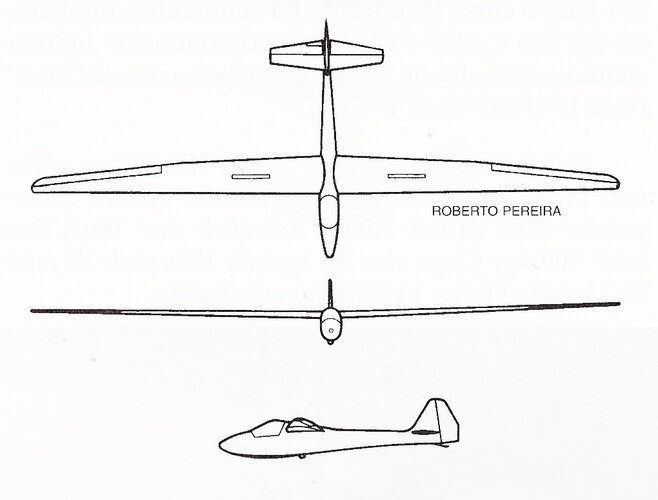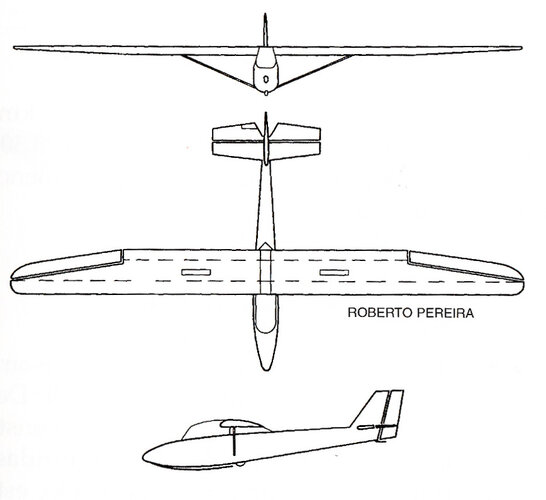I decided to flesh-out the IPT designation list. No real type additions but a bit more detail and a few corrections made.
Instituto de Pesquisas Tecnológicas - São José dos Campos, Brazil
As the name 'Institute for Technological Research' suggests, IPT was never intended to be a manufacturer of aircraft. Instead, IPT was mandated to function as an experimental developer - of airframes, propellers, and more basic investigation of those Brazilian woods which will be suitable for aircraft construction. This was prompted by
engenheiro Frederico Brotero who, in 1934, published '
Emprego de madeiras nacionais em aviação' ('The Use of Native Woods in Aviation').
It was planned that prototype aircraft would be developed at IPT. Suitable candidates would then enter series production at the Companhia Aeronáutica Paulista - CAP being formed for that purpose. An example of that arrangement was the CAP-1 trainer series based on the IPT-4
Planalto prototype. Note, though, that the wooden propellers used by CAP
were manufactured by the IPT workshops (just to confuse matters).
IPT engineers favoured the development of sailplanes as such airframes best tested the research and woodworking skills of the
Seção de Madeiras e Aeronáutica. That
seção later become the IPT
Divisão de Aeronáutica. This section/division was responsible for the creation of at least 20 different prototypes and development types - gliders, sailplanes, and powered aircraft.
IPT Designation Sesquence
The first IPT designation was retroactively applied. Construction of a small single-seater was begun at the
Escola Politécnica before being mover to Rio Claro for completion. Dubbed the
Bichinho de Rio Claro (the little 'pet' of Rio Claro); this prototype was retroactively designated IPT-0 (presumably after work had already begun on the IPT-1 design).
As a design group, the IPT's
Divisão de Aeronáutica survived until 1957 (at which point, the use of wood in airframe construction and propeller-making was seen as being dated). So, technically, 1957 is when the IPT designation series ends. The IPT-17
Laminar is usually given as the final IPT design. However, both that 1960 experimental sailplane and the 1959 IPT-16
Surubim saw the light of day after the closing of the
Divisão de Aeronáutica.
After IPT's
Divisão de Aeronáutica was gone, e
ng. Romeu Corsini headed the design team at the
Departamento Aeroviário do Estado de São Paulo (DAESP, which existed as a state government department until 2022). This state of São Paulo government connection explains why the final designations are prefixed 'SP'. I've included those 'SP' designations for completion ... since they continue the IPT numerical sequence.
_______________________________________________
Instituto de Pesquisas Tecnológicas IPT Designations
IPT-0
Bichinho - 1934-40 aeroclub aerobatic trainer; x 4
- IPT-0 : Single-seater; low-wing cantilever monoplane
- IPT-0 : All wood-construction using Brazilian timbers [1]
- IPT-0 : Prototype; 1 x 63 hp Walter
Mikron 4-cylinder
-- Prototype PP-THH; cockpit canopy; fully-spatted u/c
- IPT-0A:
Bichinho; open cockpit; HO4; PP-ECM; x 1
- IPT-0A: 1 x 75 hp Continental A75 HO4; span 6.80 m
- IPT-0B:
Bichinho II; open cockpit; HO4; PT-KYL; x 1
- IPT-0B: 1 x 75 hp Continental A75 HO4; span 6.80 m
- IPT-0C:
Bichinho II; more power; sliding canopy; x 1
- IPT-0C: 1 x 85 hp Continental C-85-12F; PP- ZPA/PT-AOA
-- 1938 design by F. A. Brotero & technican Orthon Hoover
-- NB: Some sources list IPT-0A (x 1) & IPT-0B (x 2) types
--
Bichinho translates as 'pet'; in ref. to its small size
--
https://www2.fab.mil.br/musal/index.php/aeronaves-em-exposicao/55-avioes/325-bichinho
IPT-1
Gafanhoto - 1942 basic training/school glider; x 2
- IPT-1 : Single-seat on open truss-framed* fuselage
- IPT-1 : Wingspan 10.35 m;** wing area 15.30 m2
-- Some sources list span as 10.32 m; others 15.35 m
- IPT-1 : Wings mounted too high led to stalling
-- Design by
eng. Frederico Abranches Brotero
-- Wing pedestal & tail boom were actually box-beams
--
Gafanhoto translates as 'grasshopper'
IPT-2
Aratinga - 1942 single-seat training sailplane, x 1
- IPT-2 : 'Bubble' canopy; shoulder-mounted wings
- IPT-2 : Wingspan 10.00 m; wing area 8.70 m2
-- Design by Sílvio de Oliveira & Clay Presgrave do Amaral
-- IPT-2 sold to
eng. José Carlos de Barros Neiva
-- Aratinga is the genus name for parakeets/conures
IPT-3
Saracura - 1942 primary training glider; x 1
- IPT-3 : Single-seat on open truss-framed* fuselage
- IPT-3 : Wingspan 9.80 m; wing area 13.70 m2
- IPT-3 : DFS
Zögling-style (or copy?) school glider
- Companhia Aeronáutica Paulista built 20-to-30
-- * Simpler, strut-braced structure comp. w/ IPT-1
-- The
saracura-do-mato is the woodland rail
IPT-4
Planalto - 1942 tandem 2-seat trainer; x 21*
- IPT-4 : Low-wing monoplane; fixed/spatted main u/c
- IPT-4 : 1 x 90 hp Franklin 4AC HO4; span 8.60 m
- IPT-4 : Open cockpit; IPT-designed fixed wing slots
- CAP-1 :
Planalto; Companhia Aeronáutica Paulista
-- * 1 x IPT-4 prototype + 20 x CAP-1 prod'n aircraft
IPT-5
Jaraguá - 1941 2-seat trainer sailplane, x 1
- IPT-5 : High-perf. sailplane; side-by-side seating
- IPT-5 : Wingspan 17.00 m;* wing area 16.00 m2
- IPT-5 : Mid-winged; semi-monocoque fuselage**
-- * Some sources give IPT-5 wingspan as 15.00 m
-- ** Unbroken line w/ glazed, hemispherical nose
-- By Romeu Corsini under Clay Presgrave do Amaral
-- Named for the Brazilian city of Jaraguá do Sul
IPT-6
Stratus - 1944 single-seat sailplane trainer, x 1
- IPT-6 : Adv. trainer; experimental competition glider
- IPT-6 : Span 15.00 m; wing area 16.00 m2; PT-PAJ
- IPT-6 : Semi-monocoque fuselage; strut-braced wings
-- Design by Estonian
eng. Johannes Lepper [2]
IPT-7
Júnior - 1945 side-by-side 2-seat trainer, x 1
- IPT-7 : Low-winged monoplane; fixed 'taildragger' u/c
- IPT-7 : 1 x 65 hp Franklin 4AC-176-BA2;* span 10.60 m
- IPT-7 : Simple constr.** design w/ low-cost local wood
-- * HO4 engine driving Brazilian IPT.9 wooden propeller
-- ** eg; Fuselage & single-piece wings of freijó wood
-- Design by
eng. Frederico Abranches Brotero
IPT-8 - (Project) 1945 twin-engined light transport
- IPT-8 : 9-seats; twin-tails; single-spar low-wings
- IPT-8 : 2 x 220 hp (unspecified) HO6s; span 15.75 m
- IPT-8 : Construction begun but never completed*
-- * Abandoned in favour of war-surplus US aircraft
-- Fabric-covered wooden construction planned **
-- ** Orig. to use 'Almad', a wood-aluminum sandwich
--
https://www.secretprojects.co.uk/threads/brazilian-eay-cap-and-ipt-designations.12035/#post-600427
IPT-9 - (Project) 1946-47 twin-engined light transport
- IPT-9 : High-winged monoplane; spatted main u/c
- IPT-9 : 2 x 200 hp DH
Gipsy Majors; span 14.00 m
- IPT-9 : 5-seater; companion design to IPT-8 (??)
-- 'Plastic' covered wood; constr. begun, abandoned
--
https://www.secretprojects.co.uk/threads/brazilian-eay-cap-and-ipt-designations.12035/#post-600427
IPT-10
Júnior - (Project) 1946 light cabin monoplane
- IPT-10: 2 + 1 seat evolution of the IPT-7
Júnior
- IPT-10: 1 x 100 hp Lycoming O-235; span 10.59 m
- IPT-10: Construction begun; was it completed (?)
-- IPT-10 design influenced the later FG-8
Guanabara
IPT-11
Bichão - (Project) 2-seat advanced trainer
- IPT-11: Tandem seat; low-wing; retr. main u/c
- IPT-11: 1 x (??) hp (??) engine; span (??) m
- IPT-11: Some influence from IPT-0
Bichinho
--
Bichão translated at the time as 'bug'
IPT-12
Caboré - 1947 high-perf. sailplane, x ?
- IPT-12 : Designed by
Eng. Sílvio de Oliveira
- IPT-12 : Wingspan 11.00 m; wing area 10.00 m2
-- Handling was poor; redesigned by Joseph Kovacs
- IPT-12A: Wingspan 12.00 m; wing area 12.00 m2
- IPT-12A: Prototype c/n 1; Brazil register PT-PBT
--
Caboré named after the Ilha do Caboré (?)
IPT-13
Banana - (Project) 1952 2-seat trainer; x 1
- IPT-13: Tandem seat low-wing monoplane; PP-ZPB
- IPT-13: 1 x 85 hp* Continental C-85-12; span 9.00 m
- IPT-13: Fixed 'taildragger' u/c; cockpit canopies
-- Ash wood framing with plywood covering overall
-- * Many sources say 75 hp Continental C-75 HO4
IPT-14
Marreco - 1956 aeroclub sailplane trainer; x 1
- IPT-14: Tandem 2-seat; wing cut out for instructor
- IPT-14: Wingspan 14.00 m; wing area 16.80 m2
- IPT-14: Shoulder-mounted semi-cantilever* wings
-- * Strut-braced from lower fuselage to ~10% span
-- * Spoiler airbrakes ~mid-chord inboard of ailerons
--
Marreco means duck (mallard/drake/widgeon)
IPT-15
Besouro - (Project) 1954-57 jet test aircraft
-- Init'l concept have have been adapted sailplane [3]
- IPT-15: Tandem 2-seat; shoulder-winged; skid u/c
- IPT-15: 2 x podded underwing engines; span (??) m
- IPT-15: 1954 concept used Fairchild PT-19 fuselage
--
Projeto Alfa: 2 x CTA pulse-jets (abandoned)
-- IPT-15: 2 x 350 lbf Turbomeca
Palas turbojets
--
Besouro in Portuguese translates as 'beetle'
-- No interest shown from Ministério da Aeronáutica
--
https://www.secretprojects.co.uk/threads/strange-design-by-ipt.1451/
IPT-16
Surubim - 1959 high-performance monoplane
- IPT-16: Single-engined, single-seat, low-wing aircraft
- IPT-16: 1 x 160 hp Hirth HM 506A 6-cyl.; span (??) m
- IPT-16: Wooden constr.; IPT fixed wing slots; retr. u/c
-- 1949 José Kovacs design, Secao de Aeronautica, IPT
-- 1951 design finalized with Sílvio de Oliveira at São José
-- 1953 const. begun with Sílvio de Oliveira at São José
-- 1959, 17 Sept., 1st flight by IPT pilot Alberto Bertelli
-- Dragged-out devel. may explain 1st name
Satanàs!
-- Surubim is a city in the state of Pernambuco, Brazil
IPT-17
Laminar - 1960 sailplane; IPT-5 deriv.; x 1
- IPT-17: Single seat; ash structure; laminar profile wing
- IPT-17: Final IPT design before becoming CTA (??)
- IPT-17: Wingspan 19.00 m; wing area 16.40 m2
SP-18
Onça - 1965 single-seat agricultural a/c; x 1
- SP-18: Mixed construction; high-mounted wing; T-tail
- SP-18: 1 x 165 hp Franklin 6ACG-298; span 12.00 m
- SP-18: PP-ZAK; designed under
eng. Romeu Corsini
-- Later, w/ Lycoming IOF-360 as IPAI-27
Jipe Voador
--
Onça =
Panthera onca aka Ounce or Jaguar
--
https://www.secretprojects.co.uk/threads/brazilian-eay-cap-and-ipt-designations.12035/#post-600487
SP-19
Galinha - High-performance sailplane; x 1
- SP-19: Single-seat, high-wing, semi-monocoque
- SP-19: Wingspan 17.10 m; later clipped to ~16 m*
- SP-19: Sílvio de Oliveira & Leonardo Jafet design
-- * Orig., long SP-19 span induced flutter problems
-- * PT-ZTA's original long-span wings induced flutter
- SP-19: aka 'IPT-19
Galinha' (prob. unofficially)
-
Galinha translates as 'hen' or 'chicken' (!)
--
https://www.secretprojects.co.uk/threads/brazilian-eay-cap-and-ipt-designations.12035/#post-600488
SP-20
Pinto - (??) Sailplane; no details
--
Pinto translates as 'chick'/'hatchling'
SP-21
Ganso - Single-seat, high-wing sailplane
- SP-21: Semi-monocoque; strut-braced wings
- SP-21: Wingspan (??) m; wing area (??) m2
- SP-21: Said to 'stall-free'; no other details
--
Ganso translates as 'goose'/'gander'
--
https://www.secretprojects.co.uk/threads/brazilian-eay-cap-and-ipt-designations.12035/#post-600489
____________________________________
[1] The ribs and formers of the IPT-0 were of
freijo (
Cordia goeldiana) hardwood. The covering was of special plywood experimentally manufactured by IPT from Paraná pine (Araucaria angustifolia).
[2] It seems common in Brasil to 'localize' names. So, Estonian-born Johannes Lepper becomes ''João' in Brazil, Hungarian-born Joseph Kovacs becomes 'José', etc. BTW, the latter would later become instumental in the development of the Nieva
Universal and Embraer
Tucano.
[3] The IPT website shows a model (attached, below) of a single-seat sailplane with shoulder gulled wings and a cruciform tailplane with underwing
motores de reação (type unknown). Identified as the 'IPT-4 Planalto' - which it clearly is not - this may be an early take on
Projeto Alfa, which becomes the IPT-15
Besouro project.

